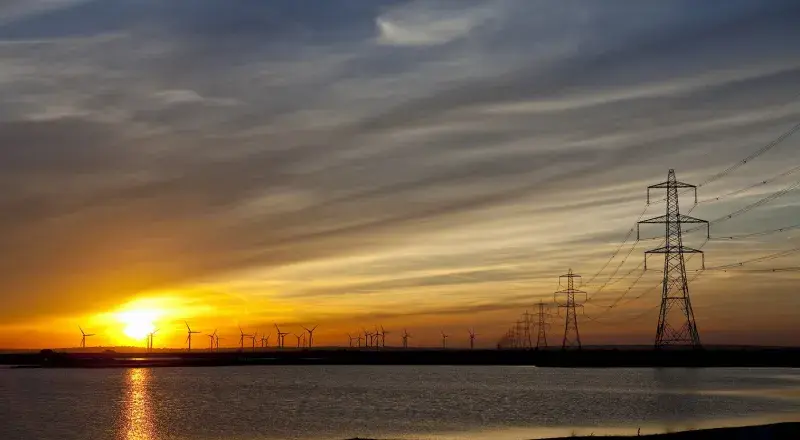Our history timeline
Discover the history of National Grid and the energy sector from the Industrial Revolution to the modern day. Travel through time from the birth of the gas industry through to our ambition to help build a greener, cleaner energy system.
1812
The gas industry is born. Britain was still at war with Napoleon when the Gas Light and Coke Company (GLCC) started operations under the seal of King George III. By the following year it was supplying coal gas to light the streets of Westminster.
1843
In the early 1800s Manchester’s police force sought to find ways to light the streets they patrolled. At that time the process of producing and distributing gas, known as undertaking, was privately managed. In 1843, Manchester’s Corporation becomes the first ever municipal undertaking.
1925
Lord Weir recommends the creation of a Central Electricity Board (CEB) to link the UK’s most efficient power stations with consumers via a ‘national gridiron'. It was set up the following year to standardise the nation’s electricity supply.
1935
The UK’s National Grid is born. Commercial operation of the national 132kV electric power transmission grid begins in the UK. It is the first integrated national grid in the world.
1950
The existing electricity network can’t meet consumers’ future demand. Work starts on a new 12-year project to create a 275kV supergrid – with new lines capable of carrying 400kV in the future.
1957
Parliament passes the Electricity Act, creating the Central Electricity Generating Board (CEGB). In popular terms, its aim is ‘to keep the lights on’ – something we still do today.
1990
The transmission activities of the Central Electricity Generating Board, covering England and Wales, are transferred to the National Grid Company plc.
1995
Dealings in National Grid shares start on 11 December 1995, following the company’s listing on the London Stock Exchange.
2000
The new millennium sees National Grid begin expansion into the US, with the acquisition of the New England Electric System and Eastern Utilities Associates.
2002
Further expansion in the US sees the Company merge with New York State utility Niagara Mohawk Power Corporation. The business becomes a subsidiary of National Grid USA.
2006 to 2007
National Grid continues its growth in the US, with the acquisitions of the Rhode Island gas distribution network and the KeySpan Corporation.
2017
National Grid sells a majority stake in National Grid Gas Distribution in March, with operations beginning under the Cadent brand from May.
2019
National Grid Electricity System Operator (ESO) becomes a legally separate business within the National Grid Group.
2019
National Grid Ventures acquires Geronimo Energy, paving the way to grow a large scale renewable energy business in the US.
2019
Sees the UK reach an historic electricity generation milestone, with more electricity generated from zero carbon sources than fossil fuels.
2021
National Grid agrees to buy Western Power Distribution (WPD) and, subject to the WPD Acquisition and certain regulatory approvals, to sell NECO, its Rhode Island gas and electricity business.
2021
National Grid buys Western Power Distribution (WPD), and agrees to sell NECO, its Rhode Island gas and electricity business, subject to the WPD Acquisition and certain regulatory approvals.
2022
National Grid completes the sale of NECO. National Grid agrees to sell 60% equity interest in the UK Gas Transmission and Metering businesses.
2023
National Grid completes the sale of 60% equity interest in the UK Gas Transmission and Metering businesses.
